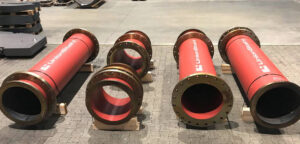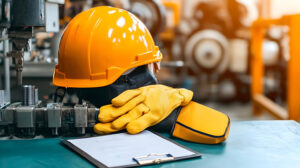Sheet metal is a central element in metal processing and comes in various shapes and sizes. From heavy plate to strip sheet, there are different variants with specific properties and applications. Here we take a look at the difference between heavy plate and strip sheet and highlight the permissible tolerances that play an important role in the industry.
Sheet metal is an essential part of our world – whether in private households or in industrial production. Defined as a “rolled metal product”, their variety ranges from steel and stainless steel to precious metals such as gold and silver as well as various types of alloyed steel and aluminum. Around 5000 years ago, the ancient Egyptians were already producing a type of steel from meteorite rock – proof of the long history and versatility of this material.
The width and length of the sheets are always greater than their thickness. They are usually presented in the form of sheets (blanks), square or rectangular, and with a minimum width of 600 mm. The edges of the sheets can be natural (rolled), machine-cut (sheared), thermally separated (flame-cut) or beveled (chamfered).
The distinction between thin sheet and heavy plate is fundamental: any sheet that is thinner than 3 mm and is usually cut from strips is considered thin sheet. On the other hand, there is heavy plate with a thickness of 3 mm or more.
Heavy plate – more than just thick sheets
Heavy plate is sheet with a thickness greater than 3 mm, produced either by direct rolling on a reversing mill or by cutting a rolled plate that has been rolled on a reversing mill. This particular product is generally referred to as quarto plate, a term that dates back to the 1980s when duo reversing mill stands were replaced by quarto stands.
With duo reversing stands, two work rolls were directly driven. In contrast, quarto stands have one pair of work rolls and one pair of drive or back-up rolls. This design enables a more precise adjustment of the thickness tolerances for quarto plates. Strictly speaking, quarto plate is a specific category of heavy plate that can have more precise thickness tolerances due to the design of the rolling stands. The specific tolerances for heavy plates or quarto plates are described in the standard EN 10029 – Hot-rolled steel sheet from 3 mm thickness onwards.
Strip sheet: from coil to finished product
Strip sheet is produced by cutting hot-rolled wide strip. Hot-rolled wide strip is a hot-rolled flat product that is wound into a coil immediately after passing through the finishing mill. These strips also have a width of more than 600 mm. After the coil has been unwound and cut to size, the hot-rolled strip can also be supplied as bars or sheets.
The resulting strip sheets are subject to specific tolerances described in the EN 10051 standard for continuous hot-rolled strip and sheet cut to length from hot-rolled wide strip of unalloyed and alloyed steels. This standard regulates the precision and quality standards for this type of sheet metal product.
Tolerance mapping: sheet metal vs. heavy plate
The tolerances of strip sheet are more precise than those of heavy plate: The tolerances for strip sheet are ordered based on the yield strength of the grades, whereas there are four classic tolerance zones for heavy plate.
Tolerance zone A allows negative tolerances. Without a special order, all heavy plates are supplied in accordance with the EN 10025 standard for hot-rolled products made of structural steels. This includes various steel grades such as S235JR+N (1.0038), S235J2+N (1.0117), S355J2+N (1.0577), S355J2C+N (1.0594), S355NL (1.0546), S460NL (1.8903), S355ML (1.8834), S460ML (1.8838), S690QL1 (1.8988) and S960QL (1.8933).
Tolerance zone B has a lowest tolerance of -0.3 mm and is used for pressure vessel steels in accordance with the EN 10028 standard for flat products made of pressure vessel steels. These include heat-resistant steels such as P265GH (1.0425), P355GH (1.0473), 16Mo3 (1.5415), 13CrMo4-5 (1.7335), 10CrMo9-10(1.7380), X12CrMo5(1.7703), low-temperature steels according to EN 10028 Part 3: Weldable fine-grained structural steels, normalized such as P355NH (1.0565), P355NL2 (1.1106), P460NL2 (1.8918), as well as ASME grades such as SA516Gr70, SA516Gr60 and SA387Gr12Cl2.
Tolerance field C has no minus tolerances, while tolerance field D indicates that both positive and negative tolerances are identical.
Heavy plate variety made to measure: Our offer – your solution
UnionStahl offers an extensive range of hot-rolled steel strip, including structural steels, boiler plates and various high-strength steels. Our core business and passion is the distribution of heavy plate. Our stock includes a wide range of unalloyed and alloyed steel grades, including structural steel, pressure vessel steel, offshore steel, wear-resistant steel and more. In addition to providing heavy plate, we also offer customized flame-cut parts in various cutting processes as well as finished machined components.

English
German






